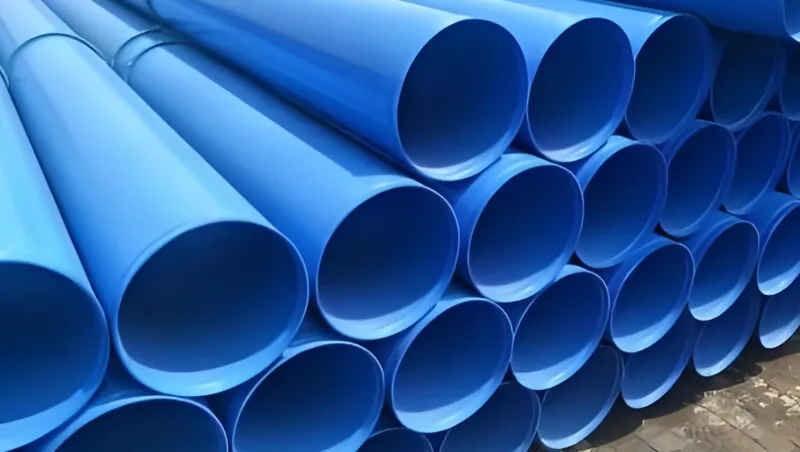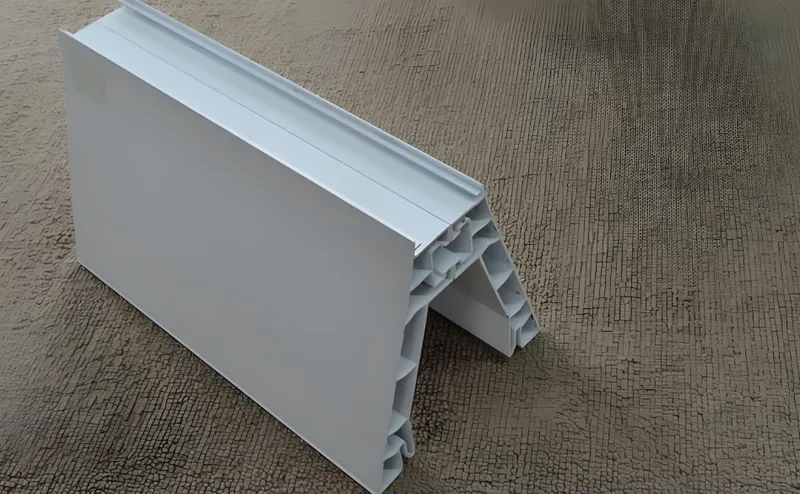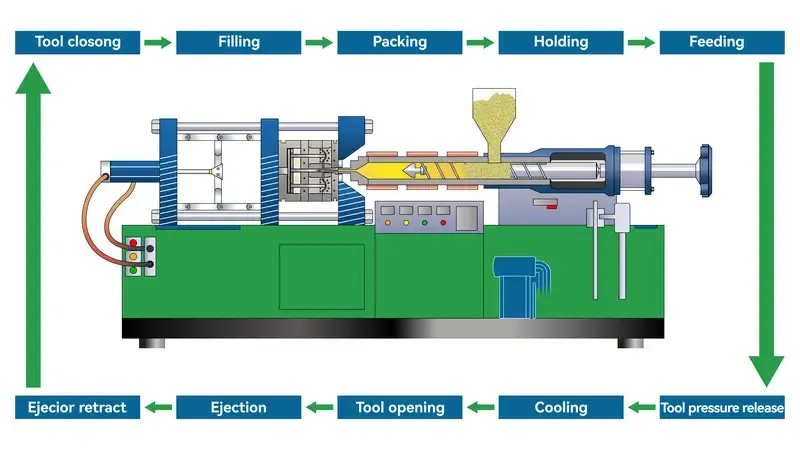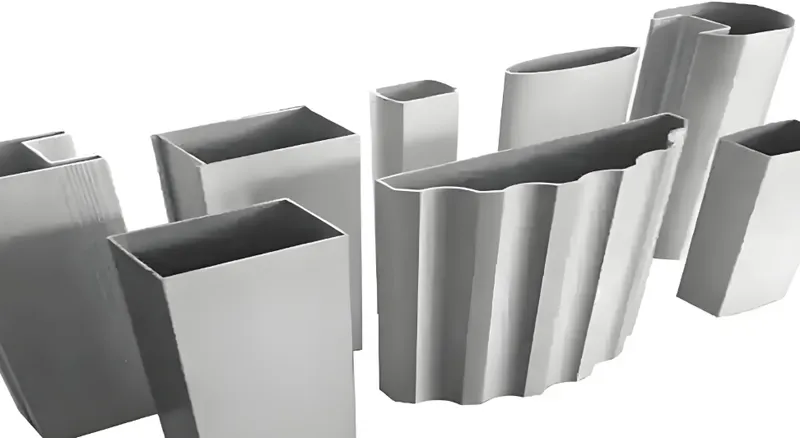Plastic extrusion and injection molding are two cornerstone manufacturing processes in the plastics industry, each offering distinct advantages tailored to specific product types and production demands. Selecting the appropriate method can profoundly influence your project’s cost, quality, and efficiency. This article delves into when plastic extrusion outshines injection molding, providing a comprehensive guide to inform your decision-making process.
Plastic extrusion is often the go-to choice for producing continuous, long products with constant cross-sections—such as pipes or sheets—owing to its lower upfront costs and efficiency with simple, two-dimensional shapes.
Grasping the nuances between these processes is vital for optimizing your manufacturing strategy. Read on to discover how factors like product design, material selection, and production volume tip the scales in favor of extrusion over injection molding.
Extrusion excels at creating continuous, long products with uniform cross-sections.True
This process efficiently produces items like pipes and sheets that maintain consistent profiles over extended lengths.
Injection molding is universally superior for all plastic manufacturing.False
While injection molding offers versatility, extrusion is more cost-effective and efficient for specific applications, particularly those requiring constant cross-sections.
- 1. What Are the Key Differences Between Extrusion and Injection Molding?
- 2. When Should You Opt for Extrusion Over Injection Molding?
- 3. What Are the Pros and Cons of Extrusion vs. Injection Molding?
- 4. How Do the Workflows of Extrusion and Injection Molding Differ?
- 5. What Materials Work with Extrusion and Injection Molding?
- 6. How to Choose Between Extrusion and Injection Molding?
- 7. Conclusion
What Are the Key Differences Between Extrusion and Injection Molding?
To choose wisely, you first need to understand what sets these processes apart.

Extrusion generates continuous, two-dimensional shapes by pushing molten plastic through a die, whereas injection molding crafts discrete, three-dimensional parts by injecting plastic into a mold.
| Process | Description | Common Applications |
|---|---|---|
| Plastic Extrusion1 | Melts thermoplastic and extrudes it through a die for continuous shapes with constant cross-sections. | Pipes, tubes, sheets, profiles |
| Injection Molding2 | Injects molten plastic into a mold to form complex, discrete 3D parts. | Gears, bottles, automotive parts |
Plastic Extrusion
Known as profile extrusion or continuous extrusion, this method shines in creating long, uniform products like PVC frames, medical tubing, and plastic sheeting. Its continuous nature makes it highly efficient for high-volume production of straightforward shapes.

Injection Molding
Referred to as injection moulding in British English, this process is perfect for intricate, three-dimensional items such as chess pieces, plastic combs, and automotive components. Its cyclical operation suits individual, complex parts but may lag in efficiency for simpler, extended shapes.
Extrusion is restricted to simple, two-dimensional profiles.True
It’s designed for products with consistent cross-sections, unlike injection molding, which tackles complex geometries.
Injection molding can’t handle continuous production.True
Its cyclical nature produces discrete parts, contrasting with extrusion’s continuous output.
When Should You Opt for Extrusion Over Injection Molding?
The decision hinges on your product’s design, material needs, and production scale.

Choose extrusion for long, continuous products with constant cross-sections—like pipes, tubes, and profiles—especially when cost-effectiveness matters for small to medium runs.
Typical Application Scenarios
Extrusion is the preferred method in these situations:
-
Continuous Products: Items like PVC frames, pipes, and weatherstripping benefit from extrusion’s ability to produce uniform profiles efficiently over long lengths.
-
Cost-Effective Runs: For small to medium production volumes of simple shapes, extrusion’s lower initial costs are a significant advantage.
For instance, manufacturing extended lengths of medical device tubing often relies on extrusion for its efficiency and affordability.
Extrusion is more economical for small to medium runs of simple shapes.True
Lower die costs make extrusion a budget-friendly choice for smaller quantities of straightforward designs.
Injection molding is always pricier than extrusion.False
Though it involves higher initial mold costs, injection molding can be more cost-effective for large runs of complex parts due to economies of scale.
What Are the Pros and Cons of Extrusion vs. Injection Molding?
A side-by-side comparison clarifies each process’s strengths and limitations.
Extrusion boasts lower upfront costs and excels in continuous production3, while injection molding offers unmatched flexibility for complex parts at a higher initial investment.
| Aspect | Plastic Extrusion | Injection Molding |
|---|---|---|
| Process Description | Heats and forces material through a die for continuous, linear shapes. | Injects molten plastic into a mold, cools, and ejects as a solid 3D part. |
| Examples | Pipes, tubes, sheets, profiles, medical tubing, plastic rails. | Gears, bottles, automotive parts, combs, chess pieces. |
| End Product Characteristics | Complex cross-sections, smooth surfaces, no post-production cleanup needed. | High precision, complex 3D shapes, often no further assembly required. |
| Advantages | Cost-effective for uniform items, continuous process, no cleanup required. | Ideal for complex shapes, high precision, suitable for large runs. |
| Disadvantages | Limited to constant cross-sections, unsuitable for complex 3D shapes. | High mold costs, cyclical process less efficient for simple shapes. |
This table underscores extrusion’s cost and efficiency benefits for continuous production, contrasted with injection molding’s prowess in complex, high-volume scenarios.
Extrusion delivers smooth surfaces without post-processing.True
It often produces finished products that need no additional cleanup, cutting time and costs.
Injection molding lags in efficiency for large runs of simple shapes.True
Its cyclical nature can make it less efficient than extrusion for producing vast quantities of simple, continuous items.
How Do the Workflows of Extrusion and Injection Molding Differ?
Examining their step-by-step processes reveals operational contrasts.

Extrusion is a continuous flow of melting and shaping plastic through a die, while injection molding is a cyclical sequence of injecting, cooling, and ejecting discrete parts.
Extrusion Workflow

-
Design Cross-Section: Engineers craft the profile to be extruded.
-
Create Die: A die matching the design is fabricated.
-
Set Up Extruder: The machine is prepped with the die and settings like temperature and pressure.
-
Feed Plastic Pellets: Thermoplastic pellets enter the hopper.
-
Heat and Melt Plastic: A screw melts the material.
-
Force Through Die: Molten plastic is extruded through the die into a continuous shape.
-
Cool Extruded Product: The shape solidifies via air or water cooling.
-
Cut to Length: The extrudate is trimmed or processed further.
Injection Molding Workflow

-
Design Part and Mold: The part is designed, and a mold is built.
-
Set Up Machine: The mold is installed, and parameters are adjusted.
-
Feed Plastic Pellets: Pellets are loaded into the hopper.
-
Heat and Melt Plastic: The material is melted.
-
Inject into Mold: Molten plastic fills the mold cavity under pressure.
-
Cool Until Solid: The mold cools to harden the plastic.
-
Eject Part: The mold opens, releasing the finished part.
Key variables like temperature, pressure, and cooling rates are critical in both, affecting product quality.
Extrusion runs continuously, unlike injection molding’s cycles.True
This core difference drives their suitability for different production needs.
Both processes use identical materials.False
Extrusion focuses on thermoplastics, while injection molding also accommodates thermosets.
What Materials Work with Extrusion and Injection Molding?
Material compatibility4 plays a pivotal role in process selection.

Extrusion leans on thermoplastics like PVC, polyethylene, and polypropylene, while injection molding embraces a broader spectrum, including thermoplastics and some thermosets.
Extrusion Materials
- Thermoplastics: PVC, polyethylene, and polypropylene dominate due to their melt-and-reform capabilities. They need good melt strength to hold shape during extrusion.
Injection Molding Materials
- Thermoplastics and Thermosets: This process handles nylon, ABS, and thermosets like epoxy, offering flexibility for parts needing high heat resistance.
Injection molding is essential for thermoset products.True
Extrusion sticks to thermoplastics, while injection molding supports thermosets critical for specific uses.
All plastics suit both processes.False
Material traits like melt strength and curing behavior dictate process compatibility.
How to Choose Between Extrusion and Injection Molding?
Practical tools can streamline your decision.

Weigh product design, material needs, and production volume5 to pick between extrusion and injection molding.
Design Checklist
-
For Extrusion:
- Is the cross-section constant?
- Is the product long or continuous?
- Is the material a suitable thermoplastic?
-
For Injection Molding:
- Does it feature complex 3D shapes or internal details?
- Are varying cross-sections required?
- Is a thermoset or specific thermoplastic needed?
Process Selection Decision Tree
-
Is the product continuous with a constant cross-section?
- Yes: Lean toward extrusion.
- No: Next question.
-
Does it have complex 3D shapes or internal features?
- Yes: Opt for injection molding.
- No: Check production volume.
-
Is the volume high (e.g., thousands of parts)?
- Yes: Injection molding might be more economical.
- No: Extrusion could be the better fit.
This framework aligns your choice with technical and economic priorities.
Production volume heavily influences the choice.True
For large runs of complex parts, injection molding’s initial costs are offset by per-part savings.
Extrusion is always best for simple shapes.False
While efficient, injection molding may outpace it for massive runs due to automation.
Conclusion
Deciding between plastic extrusion and injection molding hinges on shape, complexity, material, and volume. Extrusion shines for continuous, long products with constant cross-sections, offering cost savings and efficiency for small to medium runs. Injection molding, despite higher startup costs, excels for complex, 3D parts and large-scale production. By evaluating these elements, you can enhance both cost-effectiveness and quality in your manufacturing.
-
Explore this link to understand how Plastic Extrusion can optimize your production process and reduce costs. ↩
-
Discover the unique benefits of Injection Molding for creating intricate designs and high-precision components. ↩
-
Discover the concept of continuous production and how it enhances efficiency in manufacturing processes. ↩
-
Discover the significance of material compatibility in process selection to optimize production quality and efficiency. ↩
-
Discover how production volume influences the choice between extrusion and injection molding, ensuring you make informed decisions. ↩









